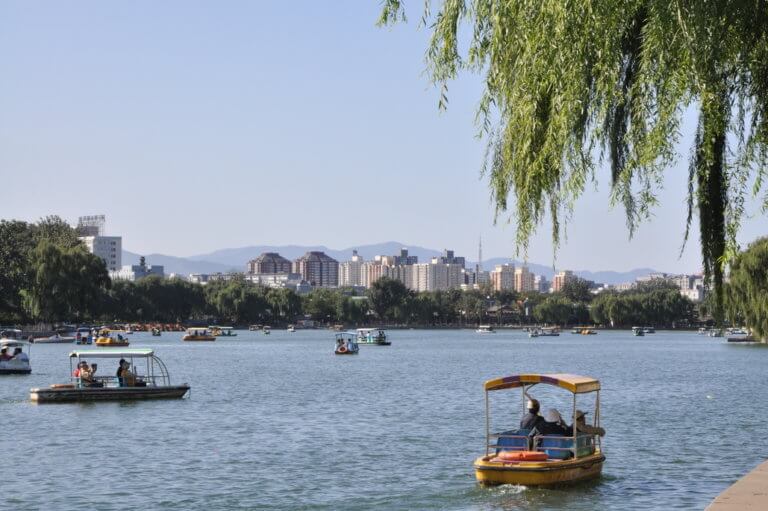Amid concerns on how “green” China can remain under enormous recovery pressure due to the mounting economic fallout of the coronavirus outbreak, China’s National Development and Reform Commission (NDRC) and the Ministry of Natural Resources (MNR) jointly released the “Master Plan for National Key Ecosystem Protection and Restoration Major Protects (2021-2035)” (herein referred to as the “Master Plan”) on June 11, 2020. This key overarching policy framework was issued as both a continuation of the long-term national strategy and as a strong signal to reassure the world that China remains firmly committed to its environmental protection agendas.
Highlighted as China’s far-reaching guideline on ecosystem protection and restoration in the upcoming period, the Master Plan stipulates a set of time-bound ecosystem quality improvement targets by 2035, while rolling out nine major ecosystem protection and restoration projects across the country to put it on this envisioned path. The Master Plan characterizes the prescribed period as a pivotal time window for pursuing an “Ecological Civilization,” while paving the way towards the long-term strategic goals of realizing “Socialist Modernization” and achieving a “Beautiful China” by 2035.
The overall expectation is a substantial improvement of ecosystems (forest, grassland, desert, river and lake, wetland, ocean, etc.), with their ecosystem services providing capability, stability, and an ecologically positive feedback loop. The Master Plan also emphasizes the novelty of forging a national ecological security barrier system, to provide the public with sound ecological goods and services and a harmonious relationship with nature. A unit of quantitative goals for 2035 is listed, including the following:
- To expand the forest coverage to 26% of China’s terrestrial area, its stocking volume to 21 billion cubic meters, and to maintain the area of natural forest at 200 million hectares;
- To have 75% of recoverable sandy land under treatment, with 56.4 million hectares degraded land newly treated;
- To cover 60% of grassland with vegetation;
- To protect 60% of wetlands;
- To have National Park centered protected areas account for over 18% of the national terrestrial areas;
- To safeguard at least 35% of the country’s natural coastlines and prevent the marine ecological condition from worsening; and
- To fully protect endangered species and their habitats.
The Master Plan outlines seven key ecosystem areas in China, which are all of distinctive but significant ecological, economic, and security importance to China. As a result, the environments in those areas had been exposed to severe development pressures for years. The identification of the key ecosystem areas builds on several fundamental ecosystem-related national strategies and initiatives, such as the national zoning framework, national ecological security structures, and some other ongoing efforts, in particular the Ecological Conservation Redlining implementation and the new Protected Area System formation. A science-based and integrated approach was adopted to ensure the robustness of the Master Plan. The continuity and integrity of natural geographical units, as well as the connectivity of species habitats, were reflected adequately in the area characterization.
From the perspective of geographic scope, the seven key ecosystem areas cover all of the main ecological security barriers, representing the most valuable ecological assets of China. The identification of the key ecosystem areas is also geared towards a more balanced and sustainable development of several pivotal cross-regional economic hubs in China, including the Beijing-Tianjin-Hebei Region, Yangtze River Economic Zone, Guangdong-Hong Kong-Macao Greater Bay Area, Yangtze River Delta Region, Yellow River Region, etc.
As part of the Master Plan, the following nine major projects on ecological protection and restoration will be promoted in the next 15 years, covering all seven key ecosystem areas (in bold):
- Ecological barrier area of the Qinghai-Tibet Plateau
- Key ecological regions of the Yellow River (including the ecological barrier of the Loess Plateau)
- Key ecological regions of the Yangtze River(including Sichuan-Yunnan ecological
barrier)
- Northeast forest belt
- Northern sand control belt
- Hilly and mountainous areas in the south
- Coastal zone
- Construction of protected area and major projects for wildlife protection
- Ecological protection and restoration supporting system
Following the Master Plan, detailed and actionable roadmaps for the nine major projects are set to be developed by the competent authorities by the end of 2020. The years of 2021 to 2025 will see tremendous input for protecting and restoring the ecological environment in National Key Ecological Zones, Ecological Conservation Redlining areas, and Key National Protected Areas. Substantial progress in addressing the central ecological issues in those special areas is expected. From 2026 to 2035, the nine major projects will be in process, contributing to the timeline envisioned by the goals of “Socialist Modernization” and a “Beautiful China.”
It has been reported that the investments for the nine major projects may reach 3 trillion RMB, surpassing the amount for the previous phase of national ecological protection and construction from 2013-2020. The previous phase was also guided by a similar high-level policy document, which focused more on critical natural resources-related issues.
The Master Plan has gained massive attention from policy observers and experts, and high hopes have been placed on the rolling out of detailed plans for the nine major projects.


